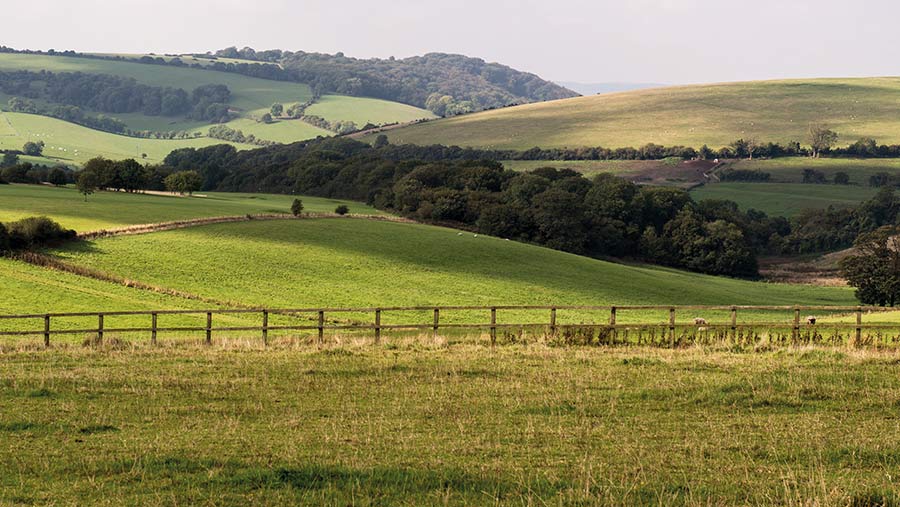4 business structures for landscape-scale farmer projects
 © Adobe Stock/simonprbenson
© Adobe Stock/simonprbenson There are growing incentives and opportunities for farmers and land managers to collaborate on environmental, conservation and other projects.
Both current stewardship schemes and future local nature and landscape recovery schemes offer incentives for farmers and land managers to work together to deliver environmental and other public goods across multiple holdings.
Private-sector operators are also buying services from groups of landowners – for example, water companies seeking to secure better water quality across catchments or developers looking to secure long-term biodiversity net gain to offset loss from the development.
See also: Sussex farm weighs pros and cons of biodiversity pilot scheme
A key question at some point in a project’s existence concerns the kind of structure organised farmer groups should operate through.
The choice will depend on a number of factors. These include whether there is an accredited facilitator holding funds and co-ordinating delivery; whether the client (public or private) wants to deal with a single entity rather than a number of different farmers; and whether non-profit organisations such as wildlife trusts are key stakeholders.
Julie Robinson of Roythornes looks at four key arrangements and sets out some of the considerations for those embarking on them.
1. Unincorporated association
This is the simplest model, whereby a group of farmers can work together as members of an unincorporated association and no separate entity is set up. Each farmer or land manager would have their own stewardship or ELM agreement and be responsible for its delivery.
The group would generally have a paid facilitator who is responsible for co-ordinating the whole project and monitoring and reporting on delivery. While there may not be a full written constitution, there will usually be a steering committee in larger groups.
Upsides Flexible, no filing formalities or registration fees for set-up.
Downsides Cannot enter contracts or own assets in its own name, so if the group needs to buy kit, engage external expertise or employ an administrator, it will be individual members of the group who take on those liabilities. The absence of a formal constitution may lead to disputes.
2. Company limited by guarantee
If farmers prefer something more formal, but without complicating life too much, they could set up a company limited by guarantee.
As members they do not own shares but guarantee the debts of the company up to a limit of their guarantee (usually £1).
The company can hold a stewardship scheme (or an ELM test and trial) agreement in its own name, with individual member agreements sitting behind the main company agreement.
If permitted by the scheme rules, the company could be responsible for auditing member performance and members would be paid for their work by the company.
Upsides Least onerous of the limited company models, off-the-shelf constitution available, can be non-profit or allow for distribution of surpluses.
Downsides Filing requirements and submission of accounts, subject to company law, unlikely to be suitable for distributing profits based on investments made by members, a separate entity for tax purposes.
3. Company limited by shares
If a group envisages making profits and wants to be able to distribute them as dividends, then a share model may be more appropriate.
So, for example, if the group becomes a recruiter for other landowners to carry out paid activities in line with the overall scheme, with the group receiving an additional amount for that from the customer, the group will generate profits. Dividends would be a usual way of distributing those profits back to group members.
4. Community Interest Company
This is a relatively new corporate model. It is likely to be used where there is a broader spread of stakeholders which include local community groups or non-profit bodies. There are constraints on the distribution of surpluses and assets of the company on winding up.
Upsides Easy and inexpensive to set up, model constitution available.
Downsides Separate regulator, restrictions on distribution of surplus, must have a community purpose.
Organisation checklist
- Take time to define the organisation’s objects – members have to operate to these.
- Be clear about membership commitments and liability for non-delivery, which is an issue. There should be an agreed approach, following discussions with the “customer”, about levels of delivery across the landscape and to what extent members who do not deliver will indemnify other members if payments are affected as a result. A lot will depend on how much buffer there is in the overall scheme to allow for some non-delivery (for example 90% full delivery of nitrate reduction plans alongside a watercourse).
- Make sure there are opportunities and rules for members to exit (for example length of notice period).
- How is the steering group/board of directors appointed? How are decisions made and accounted for?
- Ensure someone is responsible for filing returns and keeping the paperwork in order (a company secretary in a company).
- Take accounting advice on the most tax-efficient way to deal with moneys in and out. This is critical if there are surpluses/profits.
- Agree from the outset on what basis surpluses/profits will be distributed among members.
- Have proper service contracts with third parties, and employment contracts.
- A dispute resolution mechanism is vital.
Julie Robinson is a partner in Roythornes and heads the law firm’s agriculture team
